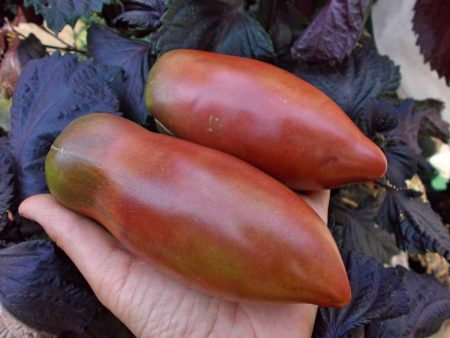
This exotic variety was bred by American breeders by crossing the varieties Green Sidzhi and Cherokee purple.
Content
Grade characteristics
Wessel's purple pride belongs to mid-season indeterminate varieties with fairly high yields. The plant is tall, the bushes are characterized by harmony and sprawling, the type of leaf is ordinary, leafyness is medium. With sufficient sunlight, the height of the bush can reach 180 - 200 cm.
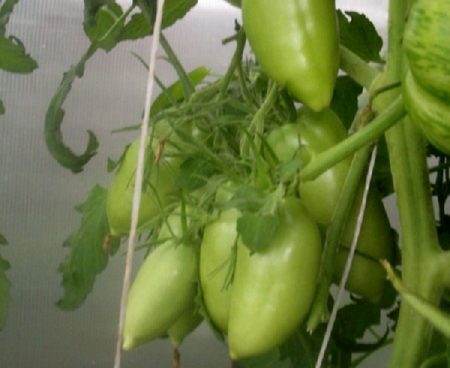
The variety is very thermophilic, so it is recommended to grow it in the southern regions or greenhouses. It is also undesirable to plant a variety in the shade, since it grows poorly and does not stretch in length.
Fruit Description
The fruits, both in the stage of technical maturity and in the stage of ripeness, have a plum-like elongated shape with a spout at the end. In ripe form, they acquire an exotic violet - purple color.
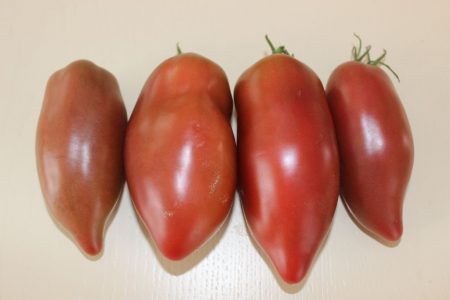
The weight of ripe fruits can reach 200 g, and the average weight ranges from 80-150 g.
The taste of tomatoes is very rich, with sweetness. The fruits are quite fleshy, with a thin and strong skin. The surface of the tomatoes is smooth and shiny, without cracks. After harvesting, they do not deteriorate during transportation and storage.
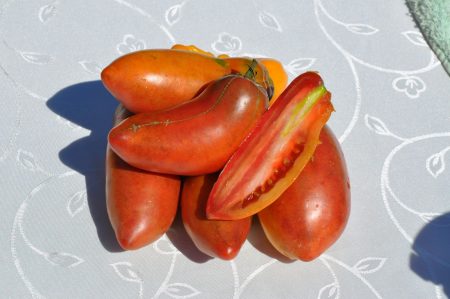
Fruits are almost seedless, great for preparing fresh dishes and juices.
Advantages of the Wessel Purple Pride variety:
- constant tying of new fruits;
- extended fruiting allows you to get the crop to the very frosts;
- the bushes grow up and take up less area in width - this allows the rational use of land;
- very high productivity - you can get several times more fruits from one bush than from ordinary varieties.
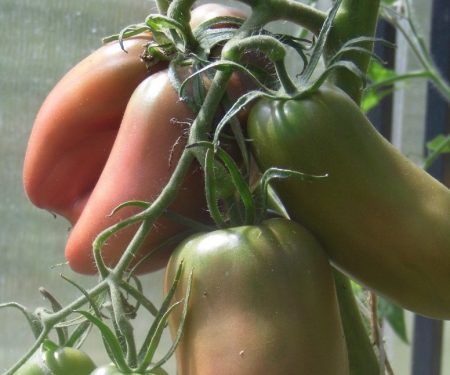
The disadvantages of the variety:
- fruit ripening occurs 30 to 40 days later;
- not suitable for cultivation in regions with short summers;
- in middle latitudes it is undesirable to plant in open ground;
- long formation of the vegetative part.
Agricultural technology
Wessel’s purple pride belongs to indeterminate varieties, so sowing and further care are slightly different from cultivating familiar varieties.
Preparing seeds for sowing
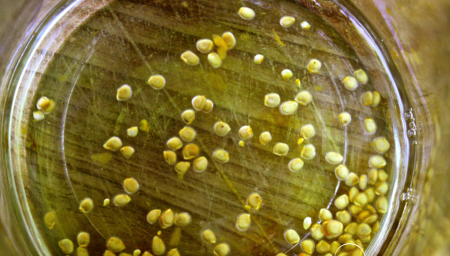
Sowing seeds is planned in early March. To do this, the seeds are wrapped in a damp cloth for several days for germination.
To disinfect planting material, the germinated seeds must be held in a weak solution of potassium permanganate for about half an hour, and then washed with warm running water.
And at the last stage, it is advisable to hold the seeds in a growth stimulator.
Sowing seeds
For sowing seeds, pots of approximately 10x10 cm in size with nutrient soil are preliminarily prepared. Planting material is buried by 2 cm, sprinkled with earth on top and sprayed with water at room temperature from the spray gun.
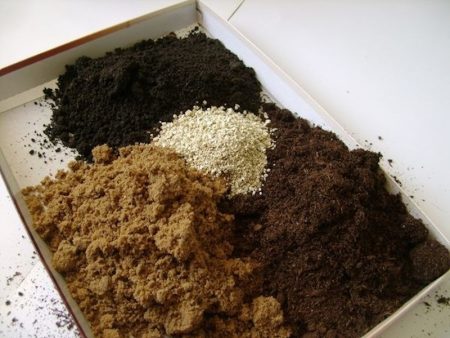
Pots are covered with transparent covering material (film or glass) and placed in a warm place well lit by the sun. Covering material every day must be removed for a while for ventilation. And also regularly moisten the soil, preventing drying. When the first shoots appear, the film or glass is removed.
Picking seedlings
When 2-3 real leaves appear on the sprouts, seedlings are planted. This is necessary to further strengthen the root system.
In pre-prepared plastic cups with nutritious soil, make a small hole and transplant the sprouts along with lumps of earth on the roots. Gently compact the ground and spray with warm water. Place the glasses in a warm and well-lit room for 60 days, regularly moistening the soil and preventing it from drying out.
Planting seedlings in the garden
Planting seedlings in the garden is carried out in mid-May. For this variety, loamy soil fertilized with organic matter is preferable. The place should be sunny and in no case shaded, well protected from the winds.
In the ground, deepen in advance and transplant seedlings together with clods of earth. 4 plants are placed on 1 sq.m.
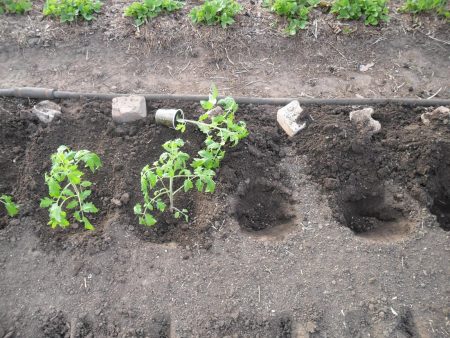
After transplanting, it is necessary to water the seedlings with water at room temperature.
It is desirable that legume and pumpkin crops were the predecessors of tomatoes in the garden. It is undesirable to plant tomatoes next to potatoes.
If seedlings were planted in early May, then seedlings must be covered with foil for some time. Such a measure will allow to obtain a large and high-quality crop.
Seedling Care
Caring for seedlings of this variety is not difficult and consists in the formation of bushes, tying them, watering and feeding.
Watering
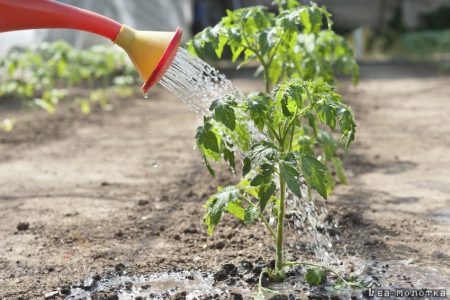
Watering is carried out regularly, preventing drying of the soil. But the earth cannot be moistened too much in order to avoid the development of rot and the black leg. Moisten the soil should only be under the root.
In the Wessel Purple Pride variety, the root system, in addition to the main root, also consists of subordinate roots that help a large plant get nutrients from the soil. Therefore, when watering, you need to make sure that the water does not wash out the soil near the stem.
If a tomato grows in a greenhouse, it is advisable to loosen the soil after watering - this will allow excessive moisture to evaporate and prevent the formation of rot.
Tying bushes
Tomatoes of this variety need to be tied. To do this, it is best to use special trellises or an agricultural grid. But you can use your own made long sticks.
Top dressing
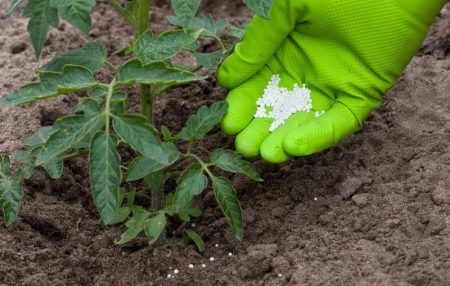
Feeding is carried out with complex mineral fertilizers, which can be bought in specialized stores. It is extremely necessary to apply mineral fertilizers, because with a lack of nutrients, a weak root will not be able to feed the upper part of the bush, and, accordingly, crop growth may stop.
Top dressing is carried out in several stages:
- during the flowering of brushes, the plant needs phosphorus-containing preparations;
- during fruit loading, nitrogen and potassium top dressing is introduced;
- when the remaining brushes begin to bloom, they again introduce phosphoric fertilizers;
- before harvesting, when the fruits ripen, potassium is added.
Bushes
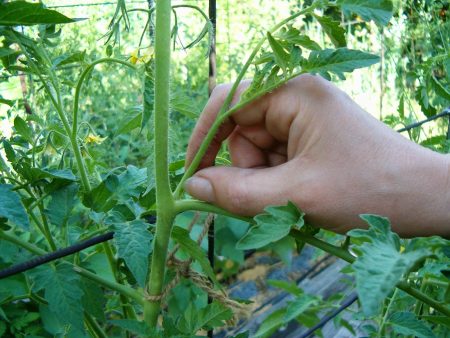
When forming a plant, it is necessary to pinch off all the side branches and stepsons, leaving the central stem. Stepsons require nutrients that the central trunk lacks - and this leads to a significant decrease in yield. Side branches, in addition, create additional density, which interferes with the active air circulation and provokes the development of powdery mildew and gray rot. Lower leaves must be removed during plant growth.
It is possible to form a bush in 2 stems. In this case, the second stem should be lower than the first brush. On the second stalk 3 brushes are usually formed, and then its growth is stopped.
Tomato Disease
Wessel's Violet Pride variety is a highly immune tomato. But when grown in a greenhouse, in conditions of high humidity, the appearance of apical rot or a black leg is still possible. Common pests of tomatoes may appear.
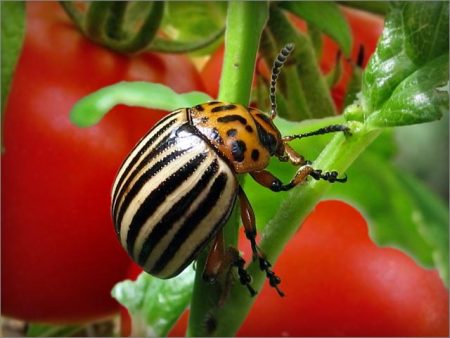
Tomato diseases can be prevented with calcium nitrate by periodically spraying bushes with this solution. As a prophylaxis of fungal diseases, drugs containing copper and sulfur can be used. In the fight against pests, it is worth using the special preparations Tattu, Infinito, Aliette and Ridomil Gold.




 Low-growing tomatoes, without pinching: 5 of the most delicious varieties
Low-growing tomatoes, without pinching: 5 of the most delicious varieties Why tomato seedlings grow poorly
Why tomato seedlings grow poorly We grow a tomato in a shell
We grow a tomato in a shell Growing tomatoes without watering according to the method of Kazarin
Growing tomatoes without watering according to the method of Kazarin
Valentine
Everything is written accessible and understandable very well thanks. Be sure to find and plant this variety.